ESIF 2021
Developing the Frontier of Energy Systems Research at a Decisive Time
For nearly a decade, the Energy Systems Integration Facility (ESIF) has consistently been at the forefront of clean energy systems integration, finding the best paths and options for energy transitions and demonstrating secure and resilient deployment.


Research Highlights

Grid Modernization
Self-Organizing Microgrids Offer a Scalable Approach to Community Resilience
With the project Reorg, NREL is showing the way toward resilient and autonomous energy systems for communities. With support from the DOE Office of Energy Efficiency and Renewable Energy (EERE) Solar Energy Technologies Office (SETO), Reorg is aimed at designing and demonstrating artificial intelligence (AI)-based tools for adaptively resilient distribution networks. The tools include a software suite for intelligent analysis and control that allows microgrid cells to island or cluster with surrounding cells as needed to form self-reliant sections of the distribution grid. The adaptive microgrids will be piloted in a remote 5-MW community in Aspen, Colorado, served by project partner Holy Cross Energy.
Improving Utility Operations With Advanced Data Collection, Grid Visibility
In a high-impact collaboration, NREL deployed advanced metering infrastructure (AMI) within the grid operations of partner San Diego Gas & Electric Company (SDG&E). AMI, an integrated system of smart meters, allows utilities to collect real-time, highly detailed energy use data at the individual customer level to better monitor, operate, and control the grid. NREL has been demonstrating AMI use case scenarios with the Advanced Distribution Management System Test Bed, and the project team has recently analyzed the AMI data using NREL's high-performance computing and 3D visualization capabilities to identify modernization strategies for SDG&E. This project is supported in part by the DOE Office of Electricity.
HYBRED Battery Stack Design Tool Gives Second Life to Batteries
Working with Centrica, NREL explored the untapped potential of operating and controlling different battery types together as a single coordinated system. As part of this work, NREL and Centrica developed the HYBrid Robust Energy Storage Design (HYBRED) design tool to help customers choose the best battery system for their needs. This work looked specifically at how to incorporate end-of-use batteries from electric vehicle, residential, or utility applications; in some cases, such hybrid solutions were shown to outperform other storage approaches. HYBRED will now be used by Centrica to target cost savings and reliability for its customers.
NREL-Eaton Project Advances Edge-Level Threat Detection for Operational Technology
In collaboration with Eaton Corporation, NREL continued work on the Advanced Operational Technology Edge-Level Data-Driven Threat Detection project. Awarded by the DOE Technology Commercialization Fund, this project is developing an operational technology intrusion detection system for cyber-physical security in critical systems. NREL assessed the technology by subjecting commercial hardware and software to simulated attacks using the Advanced Research on Integrated Energy Systems Cyber Range. An advanced approach to intrusion detection will provide nuanced insight into potential system anomalies for utilities, substation operators, and other organizations that rely on critical operational technology assets.
Researchers Evaluate Hydropower Security With Cybersecurity Value-at-Risk Framework
With support from the DOE EERE Water Power Technologies Office and in collaboration with Argonne National Laboratory, NREL developed the Cybersecurity Value-at-Risk Framework. This tool is for hydropower operators to perform custom cybersecurity assessments of their plants and understand how certain investments can improve overall resilience. The tool draws on NREL's previous work in developing the Distributed Energy Resource Cybersecurity Framework. During the past year at the ESIF, the team identified factors that would influence the probability of a cyberattack, assigned values to control implementations for risk scoring, and developed attack patterns that are unique to hydropower.
A Resilient Framework Sustains Power for Essential Services in a Catastrophe
NREL and the University of Minnesota are reformulating post-catastrophe responses for critical services with a project funded by the Advanced Research Projects Agency–Energy, named Rapidly Viable and Sustained Grid. For this project, the team developed a framework that coordinates the resources needed for the rapid energization and enduring support of critical facilities, such as hospitals. The framework uses renewables and other available resources to form multi-scale microgrids that can seamlessly connect to or disconnect from the larger grid. The research team will implement this solution in increasingly larger power-hardware-in-the-loop experiments with a final demonstration exceeding 1 MW.
Industry Collaboration Supports New Vehicle Charging Standard
Leveraging the ESIF's Electric Vehicle Research Infrastructure (EVRI) evaluation platform and with funding from the DOE EERE Vehicle Technologies Office, researchers are collaborating with the electric vehicle and charging equipment industry on a new high-power charging standard. Dubbed the Megawatt Charging System, the new standard will provide commercial fleets with a necessary layer of equipment certainty. NREL has cohosted multiple evaluations in collaboration with the Charging Interface Initiative, providing an opportunity for researchers and industry participants to discuss the technical merit of equipment parameters and ensure that the new standard is interoperable, which is critical to ensuring broad, consistent access to charging stations.
Intelligent Controls Lower Costs for Grid-Interactive Buildings
Energy integration researchers are demonstrating and deploying scalable AI controls for commercial building energy management in a DOE EERE Building Technologies Office project named Multi-Objective Deep Reinforcement Learning Control with the University of Colorado Boulder and smart building startup QCoefficient. The team's goal is to avoid the cost of creating detailed engineering models by instead learning optimal energy management. The researchers ran their controls in a few representative scenarios, showing that an AI-augmented approach is lower cost than standard model-based methods to energy management. The research team is now working to deploy the controls in a field test on a commercial building in New York City.

Hydrogen and Renewable Fuel Systems
Innovations Enable Fast Hydrogen Fueling for Heavy-Duty Vehicles
DOE and industry are focusing on fueling innovations for fuel cell electric vehicles, including heavy-duty trucks and machinery, such as Class 8 semitrucks, marine, rail, and mining applications. A collaboration with the DOE EERE Hydrogen and Fuel Cell Technologies Office, Air Liquide, Honda, Shell, and Toyota—called the Innovating High Throughput Hydrogen Stations Project—aims to explore and demonstrate the technical feasibility of high-flow-rate (10-kg/min average) fueling for heavy-duty fuel cell electric vehicles. The project team has leveraged NREL's Hydrogen Filling Simulation (H2Fills) model to design and build a new heavy-duty hydrogen fueling station, a research space for large-scale equipment installations and evaluations.
MW+ Electrolyzer Capability Development and Validation With Nel Hydrogen
In June 2021, DOE launched the first Energy Earthshot—Hydrogen Shot—to reduce the cost of producing clean hydrogen by 80% to $1 per 1 kg in 1 decade ("1 1 1"). Water electrolyzer manufacturers, such as Nel Hydrogen US, are developing megawatt-sized electrolysis systems to reduce costs to less than $500/kW, and they are turning to NREL to validate these systems using the ESIF's electrolyzer stack evaluation platform. NREL and Nel joined forces to complete 5,000 hours of performance testing on Nel's proton exchange membrane electrolyzer stack. Data collected are critical in achieving Nel's goals for efficiency, cost, and durability prior to commercial release.
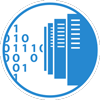
High-Performance Computing, Data Integration, and Analysis
Modeling Future Solar-Plus-Storage Adoption
NREL has been leading the Storage Futures Study, a multiyear research project that explores the potential role and impact of energy storage on the future grid. This work is part of DOE's Energy Storage Grand Challenge, a program to accelerate the development, commercialization, and utilization of next-generation energy storage technologies. In one of several Storage Futures Study reports released in the past year, NREL examined the potential for distributed solar-plus-storage growth and identified key drivers of adoption. To do this, NREL integrated multiple technical and economic modeling tools on the Eagle supercomputer, finding significant economic potential for behind-the-meter battery energy storage.
NREL Shows Los Angeles Can Achieve Reliable, 100% Renewable Energy
NREL released the landmark Los Angeles 100% Renewable Energy Study (LA100), which explored how the second largest city in the nation could achieve a 100% clean energy future as soon as 2035. Funded by the Los Angeles Department of Water and Power, in partnership with the University of Southern California, Colorado State University, and Kearns & West, NREL performed a first-of-its-kind power systems analysis of the department's existing energy system. For the study, NREL pioneered a methodology that integrates multiple research tools to better capture the complexity of energy transitions and community impacts. The methodology is now being employed in related clean energy transitions.
Expanding High-Performance Computing Capacity With Kestrel Procurement
NREL has selected its third-generation HPC system, called Kestrel. With approximately 44 petaflops of computing power, Kestrel will rapidly advance DOE's energy research at a pace and scale more than five times greater than Eagle. Kestrel's heterogeneous architecture is designed to enable emerging workflows that fuse simulations with new sensor data sources and AI, providing EERE and industry partners with the ability to tackle the research challenges in computational materials, continuum mechanics, and large-scale simulation and planning for future energy systems.

Lab Updates and Advanced Capabilities
International audit affirms ESIF's best-in-class status.
Remote access and automated testing now available to residential battery stakeholders.
DC power upgrades support increased battery, vehicle, photovoltaics, and hydrogen emulation.
One-megawatt expansion of Research Electrical Distribution Bus will serve energy integration research in EVs, hydrogen, energy storage, and microgrids.
Expanded evaluation platform explores grid impacts of EV charging systems.
New data systems serve commercial buildings research.
At-scale integrated hydrogen system integrates production, compression, storage, and dispensing into a unified system.
Hydrogen Stack Test Bed achieved a performance milestone of 5,000 hours of operation on an electrolyzer stack.
Seven new electrolysis test stations boost hydrogen research capabilities.
Novel hydrogen leak sensors improve laboratory safety.
Cyber Range emulations help mitigate the impact of cybersecurity threats to distributed energy systems.
Architecture established for facility-wide infrastructure for communications research.
Partners
U.S. Department of Energy Partners
- Advanced Manufacturing Office
- Advanced Research Projects Agency-Energy
- Buildings Technologies Office
- Cybersecurity, Energy Security, and Emergency Response
- Grid Modernization
- Hydrogen and Fuel Cell Technologies Office
- Nuclear Energy
- Office of Electricity Delivery and Energy Reliability
- Solar Energy Technologies Office
- Water Power Technologies Office
- Wind Energy Technologies Office
Industry and Academic Partners
- 3M
- Air Liquide
- ALD Nanosolutions
- Amphenol Thermometrics
- Amplitude Systèmes
- Analog Devices
- Anterix
- Blue Frontier
- California Air Resources Board GO-Biz
- Centrica
- Chemours
- Clarios Advanced Solutions LLC
- Colorado State University
- ComEd
- Cornell University
- Cummins
- Dioxide
- Eaton Corp.
- Ecolectro
- EIC Laboratories
- Electric Hydrogen
- Electric Power Research Institute
- Electricore Inc.
- ElectroCat Consortium
- Element One
- Emerson
- Enertronics Inc.
- EOn-Sun
- Eonti Inc.
- Eskom
- Exelon Corp.
- ExxonMobil
- Feasible
- Fiat Chrysler Automobiles
- Ford Motor Company
- Frontier Energy
- General Electric
- General Motors Co.
- Giner ELX
- Hawaiian Electric Co.
- Holy Cross Energy
- Honda Motor Co.
- Hygge
- Hyperlight Energy
- HyPoint
- Hyundai Motor Co.
- Ivys
- Lubrizol
- Mainstream Engineering
- Massachusetts Institute of Technology
- Mastercard
- Membrion
- NanoSpray
- National Rural Electric Cooperative Association
- Nel Hydrogen
- New York State Energy Research and Development Authority
- Nikola Motor Co.
- Oceanit Labs
- Overdrive
- Pennsylvania State University
- pH Matter
- Plug Power
- Proton Onsite
- Public Service Co. of New Mexico
- Resilient Power Systems
- San Diego Gas & Electric Co.
- Shell
- Shifted Energy
- Shine JuiceBox 3.0
- Siemens Corp.
- Southern California Gas Co.
- Solar Dynamics
- Span.io
- STRATIS IoT
- Survalent
- Switched Source LLC
- T4D Labs
- TCPoly
- Tetramer Technologies LLC
- Titan Advanced Energy Solutions
- Toyota Motor Co.
- Treadstone
- Triton Systems
- U.S. Department of Defense
- University of Colorado, Boulder
- University of Columbia
- University of Delaware
- University of Tennessee Space Institute
- XMarkLabs LLC
- Yaskawa Solectria Solar
Leadership and Collaboration
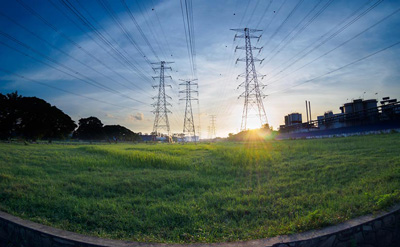
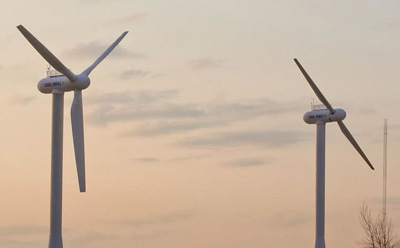
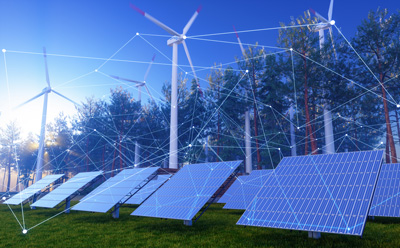
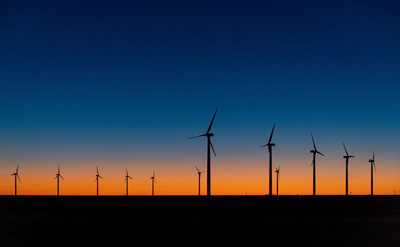
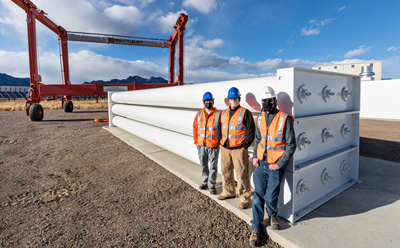
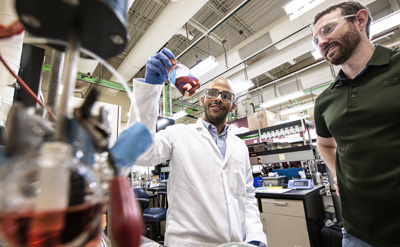
Innovations and Publications
Top Ten Most Downloaded Publications
- U.S. Solar Photovoltaic System and Energy Storage Cost Benchmark: Q1 2020
- The Los Angeles 100% Renewable Energy Study (LA100)
- Research Roadmap on Grid-Forming Inverters
- The Technical and Economic Potential of the H2@Scale Hydrogen Concept within the United States
- Cost Projections for Utility-Scale Battery Storage: 2021 Update
- Q2/Q3 2020 Solar Industry Update
- Storage Futures Study: The Four Phases of Storage Deployment: A Framework for the Expanding Role of Storage in the U.S. Power System
- Electrification Futures Study: Scenarios of Power System Evolution and Infrastructure Development for the United States
- Hybrid Energy Systems: Opportunities for Coordinated Research
- The North American Renewable Integration Study: A U.S. Perspective
Publication Spotlight: What We Know—and Do Not Know—About Achieving a National-Scale 100% Renewable Electric Grid
Download
Read more about ESIF Fiscal Year 2021 accomplishments by downloading the full report.
For more information about NREL's Energy Systems Integration Facility, visit our website.
Learn more about our research in these companion annual reports:
Advanced Computing Annual Report
Advanced Research on Integrated Energy Systems Annual Report.
Share
Last Updated April 7, 2025
